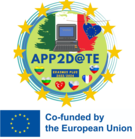The COVID-19 global pandemic has changed how the world functions, illustrating the limitations of many existing systems, and highlighting the need to reimagine the role of information technology. With the pandemic, education has changed dramatically, with the distinctive rise of e-learning, whereby teaching is undertaken remotely and on digital platforms, homes have turned into classrooms and parents have taken on the role of teaching assistant or learning partner, whether they are ready or not. With this sudden shift away from the classroom in many parts of the globe, some are wondering whether the adoption of online learning will continue to persist post-pandemic, and how such a shift would impact the worldwide education market. Distance education is the most convenient solution in critical situations, therefore the ICT skills of education staff and students should be increased and effective solutions should be developed.
The first step in combating this problem is to enable teachers themselves to develop the necessary skills, to attract and motivate their students to improve their skills and to achieve the digital capabilities required by distance learning. The use of Virtual Reality is a simple way to achieve this goal, provided that its creative nature makes students curious and enables them to learn skills far better than in today’s classroom.
Virtual reality (VR), augmented reality (AR), and Web2 tools are technologies that have the potential to transform the way we work, communicate, and experience things. These technologies have the potential to build on Europe’s creativity, skills, and cultural diversity, and impact various domains – from manufacturing, engineering, and architecture to education, healthcare, arts, entertainment, and culture. We first discussed which skills are needed for teachers and students in school education. The discussion highlighted that two different types of skills are required: digital skills and digital navigation skills. Digital skills are technical skills required to use digital technologies, whereas digital navigation skills are a wider set of skills needed to succeed in the digital world. These include finding information, prioritizing information, and assessing the quality and reliability of the information.
With the COVID-19 outbreak, EU businesses, education, social life have also had to adapt by transferring large parts of their activities online. In that conjecture, it is necessary to assess whether the Digital Competences is still fit to address these new challenges and whether it adequately prepares the Union for the post-COVID world.
As stated in the EU Commission’s ‘Skills Agenda for EU’, The green and digital transitions as accompanied by demographic trends are transforming how we live, work, and interact. We want to ensure people have the skills they need to thrive. The coronavirus pandemic has accelerated these transitions and brought new career challenges for many people in EU. The Skills Agenda aims to improve the relevance of skills in the EU to strengthen sustainable competitiveness, ensure social fairness, and build our resilience. It does this through 12 “actions”. However, there are 6 actions directly linked to our project.
– A Pact for Skills
– Strengthening skills intelligence
– EU support for strategic national upskilling action
– Skills to support the green and digital transitions
– Increasing STEM graduates and fostering entrepreneurial and transversal skills
